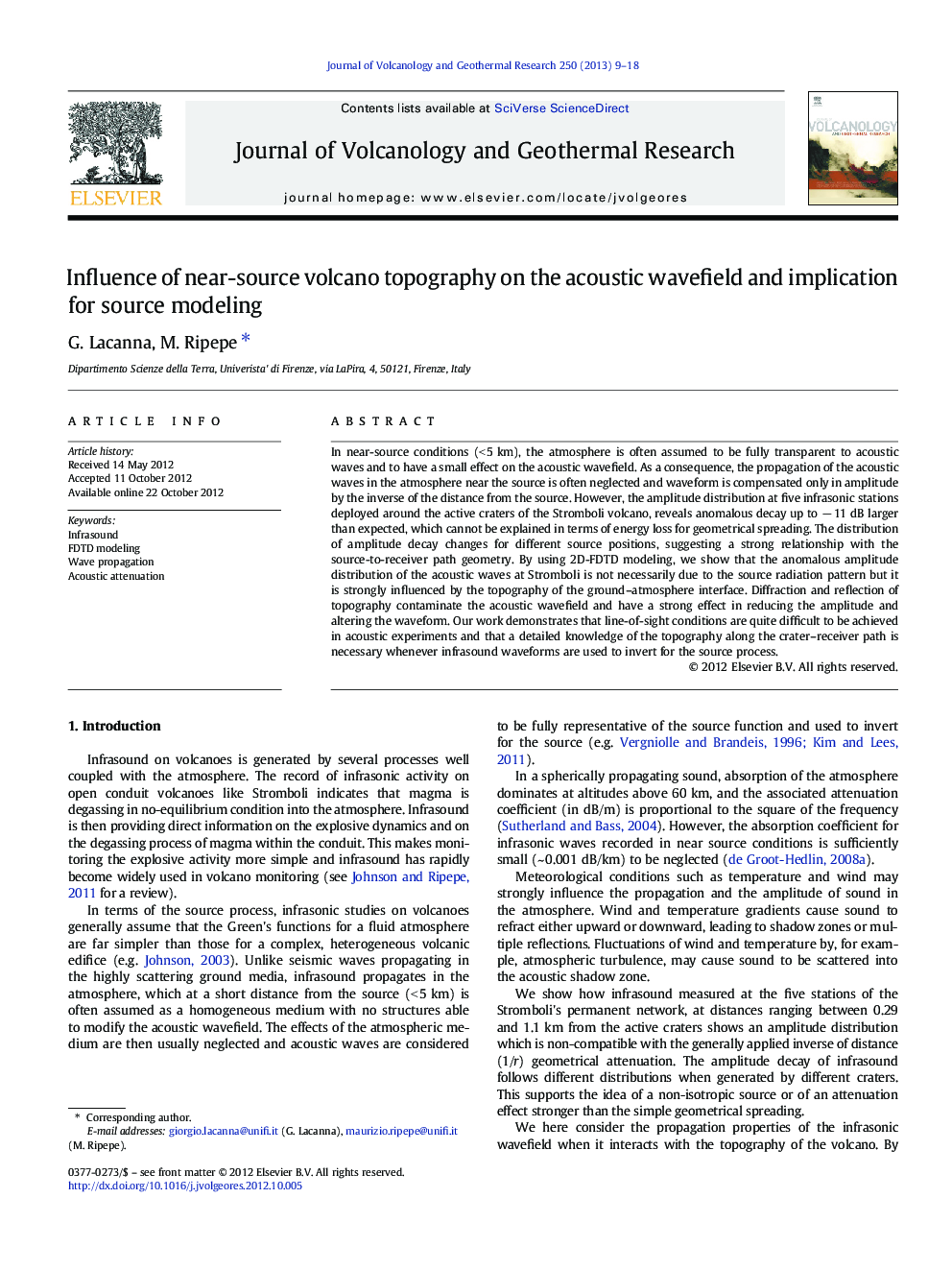| کد مقاله | کد نشریه | سال انتشار | مقاله انگلیسی | نسخه تمام متن |
|---|---|---|---|---|
| 4713230 | 1638371 | 2013 | 10 صفحه PDF | دانلود رایگان |
In near-source conditions (< 5 km), the atmosphere is often assumed to be fully transparent to acoustic waves and to have a small effect on the acoustic wavefield. As a consequence, the propagation of the acoustic waves in the atmosphere near the source is often neglected and waveform is compensated only in amplitude by the inverse of the distance from the source. However, the amplitude distribution at five infrasonic stations deployed around the active craters of the Stromboli volcano, reveals anomalous decay up to − 11 dB larger than expected, which cannot be explained in terms of energy loss for geometrical spreading. The distribution of amplitude decay changes for different source positions, suggesting a strong relationship with the source-to-receiver path geometry. By using 2D-FDTD modeling, we show that the anomalous amplitude distribution of the acoustic waves at Stromboli is not necessarily due to the source radiation pattern but it is strongly influenced by the topography of the ground–atmosphere interface. Diffraction and reflection of topography contaminate the acoustic wavefield and have a strong effect in reducing the amplitude and altering the waveform. Our work demonstrates that line-of-sight conditions are quite difficult to be achieved in acoustic experiments and that a detailed knowledge of the topography along the crater–receiver path is necessary whenever infrasound waveforms are used to invert for the source process.
► We recorded non-isoptropic amplitude distribution of the acoustic wave front.
► In near source conditions acoustic amplitude does not attenuate following 1/r law.
► FDTD modeling shows that radiation pattern is propagation rather than source effect.
► Propagation including ground topography is modeled to retrieve source function.
► Topography has to be considered as Green's function when modeling acoustic source.
Journal: Journal of Volcanology and Geothermal Research - Volume 250, 15 January 2013, Pages 9–18
